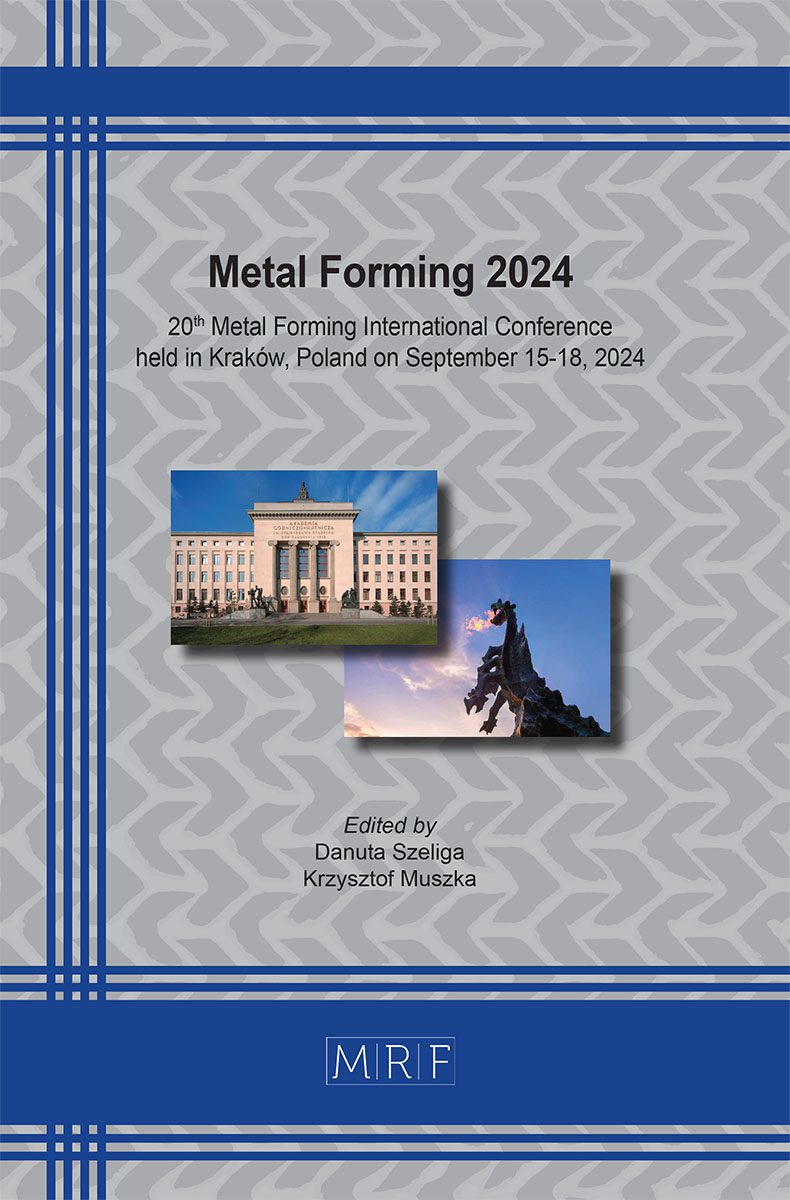–
Study influence of forming process on microstructure and properties of deep hole thick wall pipe blank
LEI Bingwang, LIU Haijiang, TU Mingjin, WANG Jiaoqi, WANG Xing, QIN Ruiting, KOU Yanyan, LIU Pengfei
download PDFAbstract. According to the demand for high strength and high toughness of deep hole thick wall pipe blank, basing on 36,000 tons of vertical extrusion machine, 3,000 tons of free forging press and 1,600 tons of radial forging machine. Using electroslag remelting to smelt Cr-Ni-Mo-V steel ingot as raw material, three forming processes were studied, including free forging and radial forging, solid extrusion and radial forging, and hollow extrusion and radial forging. The physical quantity distributions of stress, strain and strain rate in the deformation zone of billet blank in different forming processes were analyzed via numerical simulation technology. Combined with the numerical simulation results, three forming processes were carried out in engineering trial production. The trial production results show that the structure of the pipe blank produced by the hollow extrusion + radial forging process is uniform, the mechanical properties of the pipe blank at both ends of the sampling RP0.2≥1370 MPa, -40°CKV≥28.0J, the mechanical properties of the full-length cross-section of the pipe blank RP0.2≥1381 MPa, -40°CKV≥28.2 J, the full-length yield strength is 28 MPa, and the comprehensive performance level is leading in the world.
Keywords
Forming Process, Heavy Duty Extrusion, Radial Forging, Super High Strength and Toughness, Large Diameter Thick Wall Pipe Blank
Published online 9/15/2024, 15 pages
Copyright © 2024 by the author(s)
Published under license by Materials Research Forum LLC., Millersville PA, USA
Citation: LEI Bingwang, LIU Haijiang, TU Mingjin, WANG Jiaoqi, WANG Xing, QIN Ruiting, KOU Yanyan, LIU Pengfei, Study influence of forming process on microstructure and properties of deep hole thick wall pipe blank, Materials Research Proceedings, Vol. 44, pp 282-296, 2024
DOI: https://doi.org/10.21741/9781644903254-31
The article was published as article 31 of the book Metal Forming 2024
![]() Content from this work may be used under the terms of the Creative Commons Attribution 3.0 license. Any further distribution of this work must maintain attribution to the author(s) and the title of the work, journal citation and DOI.
Content from this work may be used under the terms of the Creative Commons Attribution 3.0 license. Any further distribution of this work must maintain attribution to the author(s) and the title of the work, journal citation and DOI.
References
[1] Y.F. Xu, C.L. Shan, P.K. Liu, Review of the research on gun barrel life-span prolongation, Journal of gun launch & control (2019) 90-95. https://doi.org/10.19323/j.issn.1673-6524.2019.04.019
[2] P.K. Liu, D. Yang, J. Wang, Study on ablation and wear properties of barrel materials, Journal of gun launch & control (2021) 28-33. https://doi.org/10.19323/j.issn.1673-6524.2021.04.006
[3] M.L. Zhu, L.L. Liu, F.Z. Xuan, J. Effect of frequency on very high cycle fatigue behavior of a low strength Cr-Ni-Mo-V steel welded joint, Int. J. Fatigue (2015) 77-166. https://doi.org/10.3901//JME.2016.12.023
[4] Y.Q. Ou, C.G. Yu, Y.C. Zhang, Development of erosion and wear of gun barrel, Ordnance industry automation (2012) 44-46. https://doi.org/10.3969/j.issn.1006-1576.2012.06.014
[5]S.S. Zhang, Material process and service life of gun barrel, Journal of xi’an institute of technology (1989) 1-9. https://doi.org/10.16185/j.jxatu.edu.cn.1989.01.001
[6] Y. Lv, J. Hu, Z.N. Ren, Process in steel used for large-calibre thick-wall gun barrel, Ordnance material science and engineering (2013) 142-146. https://doi.org/10.14024/j.cnki.1004-244x.2013.02.011
[7]N. Zhang, C.R. Lv, L. Xu, Currents status and development trend of gun barrel steel, J. China metallurgy (2019) 6-9. https://doi.org/10.13228,j.boyuan.issn1006-9356.20190160
[8] X.D. Yuan, L.Q. Gao, H.F. Zhang, Development and prospect of gun barrel materials, Mater. Develop. Appl. (2017) 98-104. https://doi.org/10.19515/j.cnki.1003-1545.2017.05.019
[9] J.F. Huang, J. Zhang, J.Y. Chen, Failure mechanisms of gun barrels and the development of gun steel, Journal of gun launch & control (2023) 10-29. https://doi.org/10.19323/j.issn.1673-6524.2023.01.002
[10] D.B. Sun, Z.L. Jin, W. Li, Effect of tempering process on microstructure transformation of large-caliber 40CrNiMoV, Ordnance material science and engineering (2023) 72-76. https://doi.org/10.14024/j.cnki.1004-244x.20230516.004
[11] Y. Liu, M.Q. Wang, G.Q. Liu, Effects of tempering temperature on microstructure and mechanical properties of 40CrNiMoV steel, Journal of gun launch & control (2019) 90-95. https://doi.org/10.13251/j.issn.0254-6051.2014.06.012
[12] J.T. Liang, C.Z. Zhao, H.X. Yin, Strain rate sensitivity of ultra-high strength hot stamping steel, Chinese Journal of Engineering (2018) 1083-1090. https://doi.org/10.13374//j.issn2095-9389.2018.09.009
[13] H.J. Cai, J.F. Hu, R.B. Song, Plastic deformation microscopic mechanism of cold rolled dual phase steel DP1200 under high strain rate deformation, J. Mech. Eng. (2016) 23-29. https://doi.org/10.3901//JME.2016.12.023
[14] W. Zhang, Y. Pan, H.S. Liu, Effect of strain rate on properties of dual phase steel with high formability, Iron and steel (2022) 123-127. https://doi.org/10.13228/j.boyuan.issn0449-749x.20210619
[15] H.N. Liu, Y.D. Mei, L.B. Liu, Influence of strain rate on properties for low alloy high strength steel, Forg. Stamp. Tech. (2023) 253-257. https://doi.org/10. 13330/j.issn.1000-3940.2023.06. 034












